

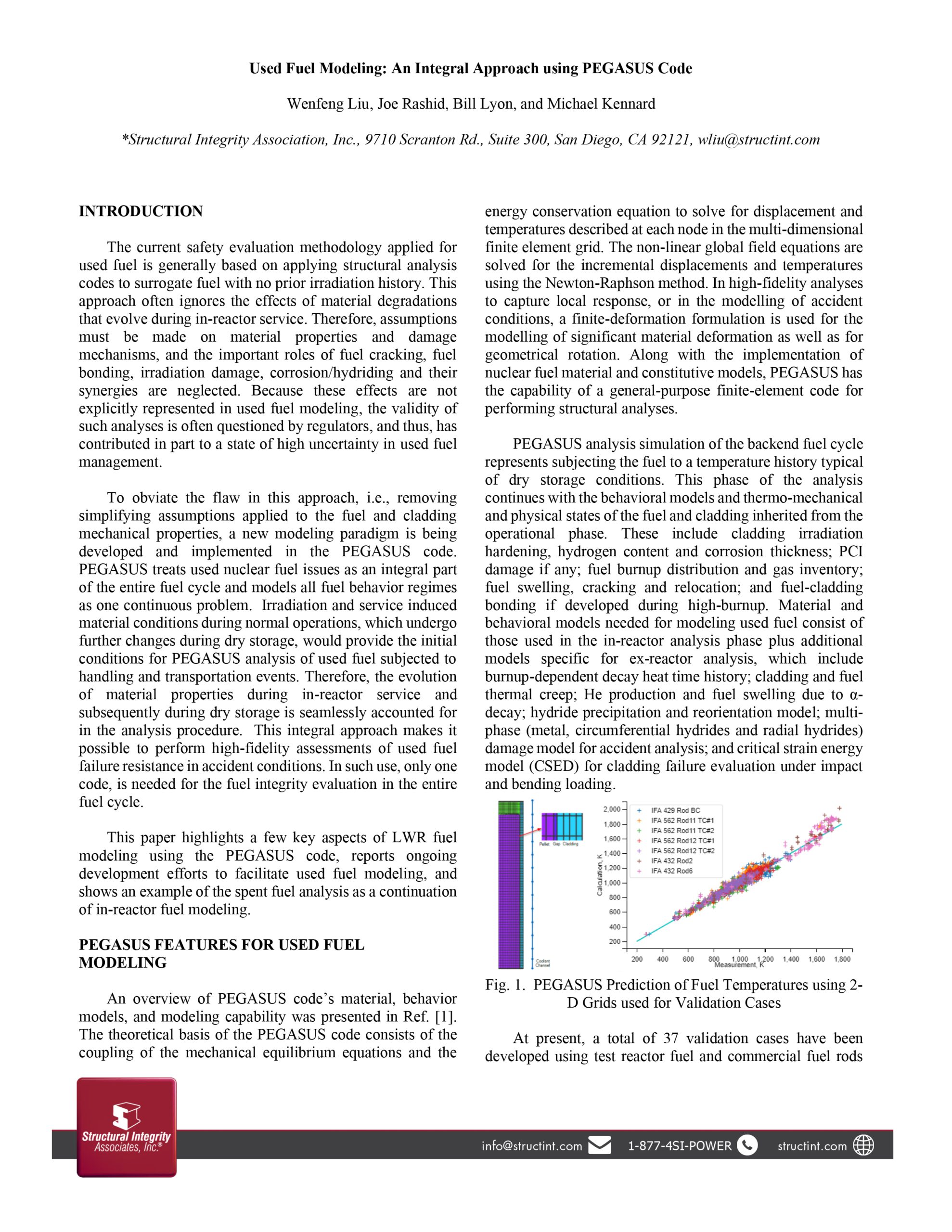
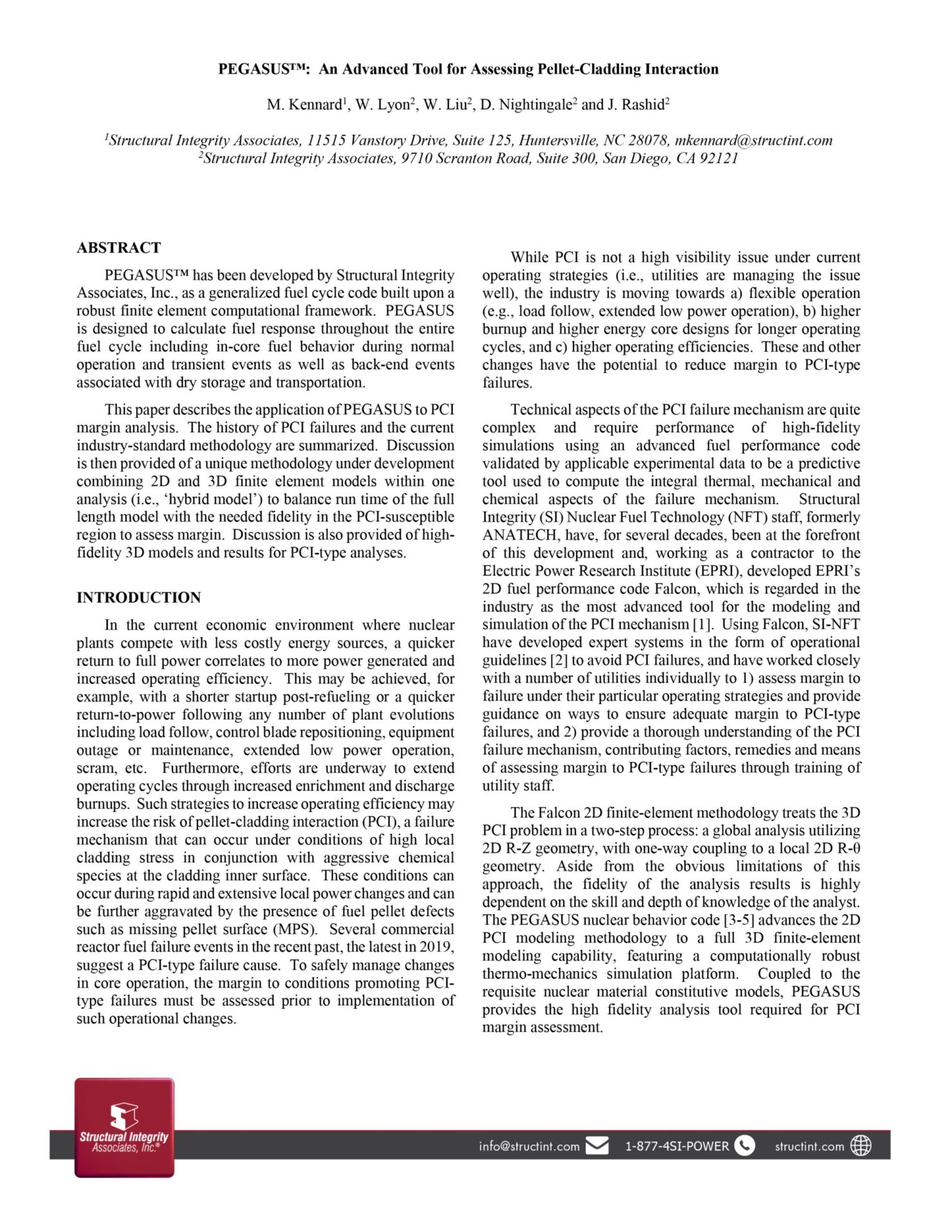
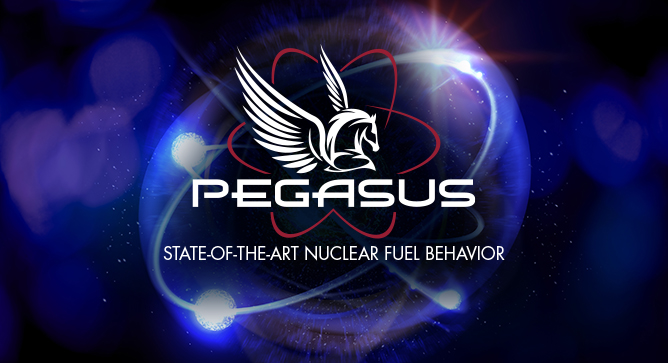
By: Wenfeng Liu PEGASUS, a finite element fuel code developed at SIA, represents a new
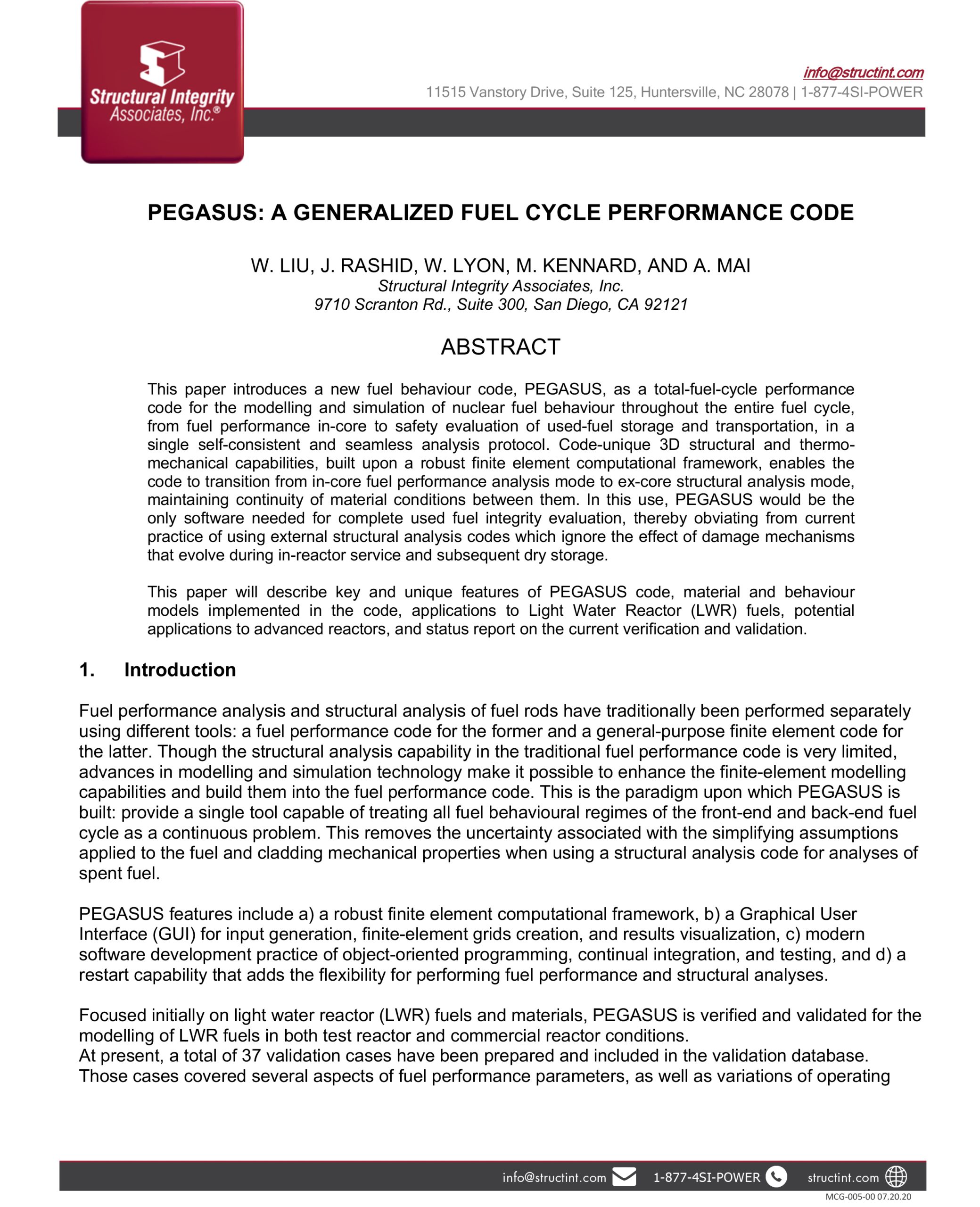
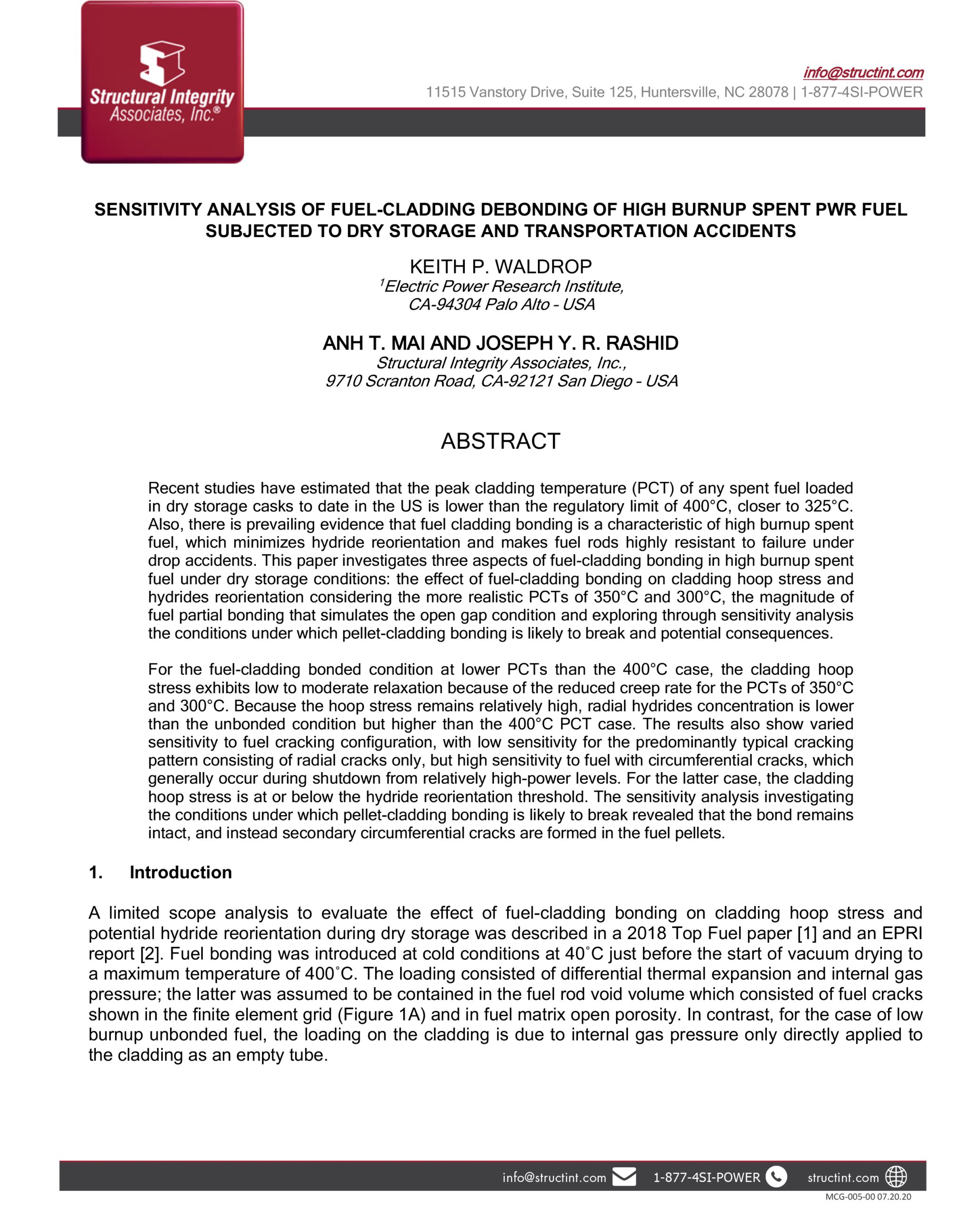
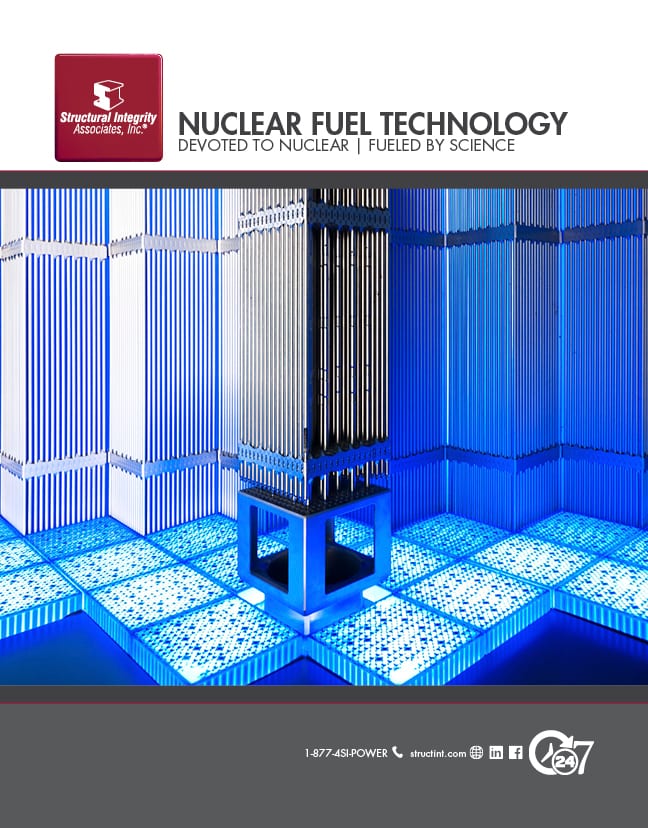
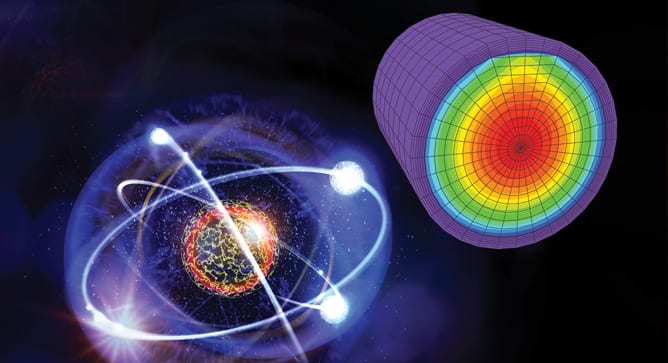
By: Bill Lyon, PE and Michael Kennard PEGASUS provides a fully capable computational environment to
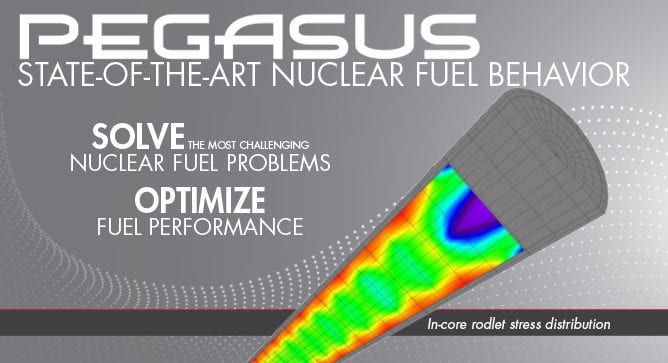
On October 28th, the Structural Integrity (SI) Nuclear Fuel Technology Team achieved a major milestone
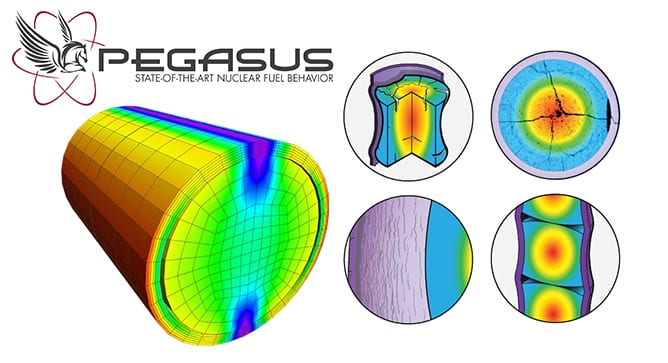
By: Vick Nazareth and Bill Lyon The Pegasus code is a culmination of nuclear fuel